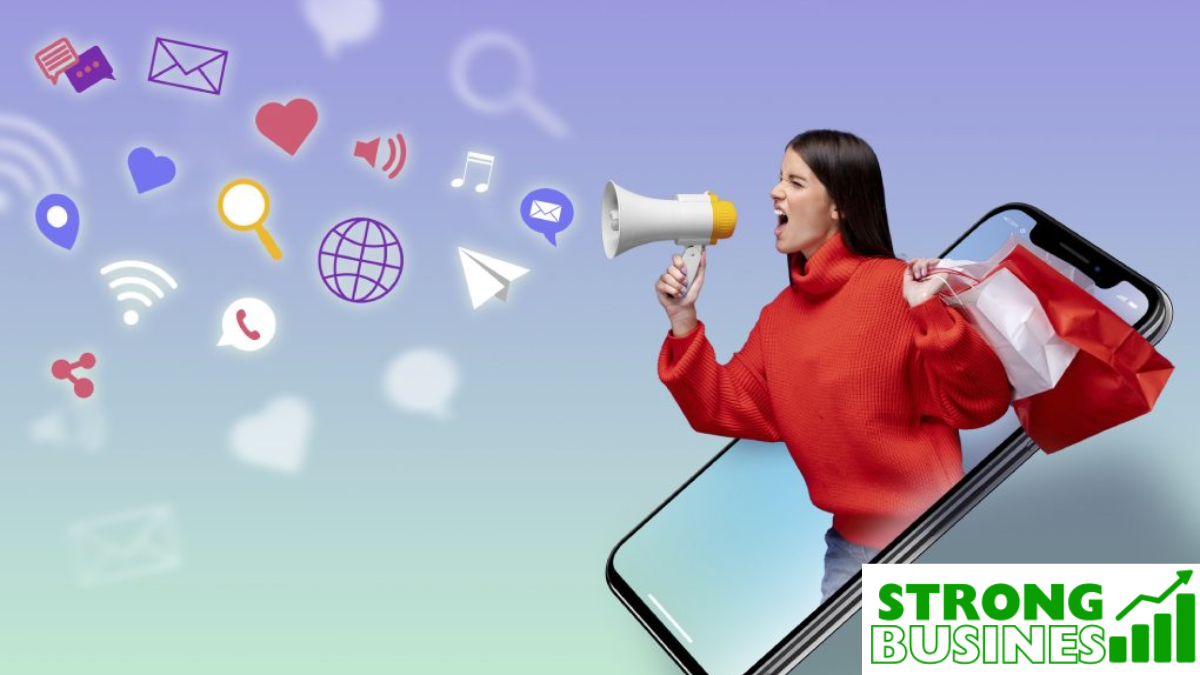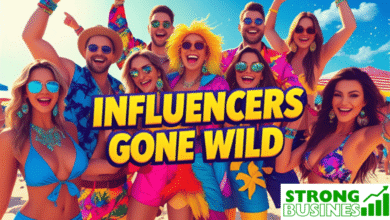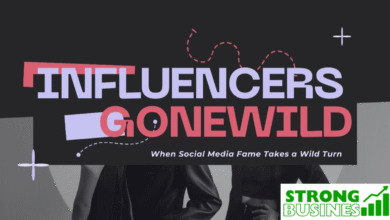Influencers gone wild the last decade, the internet has witnessed a radical shift in how fame and success are measured. Traditional celebrities once dominated media and public interest, but now influencers have carved out a new niche. These individuals, often beginning with humble origins on platforms like YouTube, Instagram, TikTok, and Twitter, have leveraged relatability, humor, beauty, or lifestyle inspiration to build vast audiences. As the influence of these creators grew, so did their opportunities—from brand sponsorships and merchandise to global recognition. However, with great influence comes increased scrutiny, and the phenomenon dubbed “influencers gone wild” has emerged as a result.
Influencers are no longer niche internet personalities. They are the face of campaigns, ambassadors of brands, and role models for younger generations. Yet, in some cases, the power and fame get to their heads. As they step further into the limelight, many lose touch with reality, setting off controversies, scandals, and unexpected behaviors that dominate headlines and trigger public backlash. The phrase “influencers gone wild” captures this transformation, highlighting the contrast between curated online personas and the chaotic actions that often unfold behind the scenes.
Fame and the Pressure to Perform
The pressure on influencers to constantly entertain, inform, or shock their audiences has led many to blur the lines between authenticity and extremity. The pursuit of virality and engagement can tempt creators to act impulsively or irresponsibly, especially when they know millions are watching. As they compete for relevance in a saturated market, some influencers escalate their antics, using provocative or sensational behavior as a strategy for attention. While this may produce short-term success, the long-term consequences are often damaging.
The influencer lifestyle, when scrutinized, reveals a paradox. On one hand, influencers promote a glamorous life filled with travel, luxury, and freedom. On the other hand, they are often locked in a relentless cycle of content production, algorithm battles, and follower expectations. The mental toll can be significant, leading to burnout, erratic behavior, or public meltdowns. This psychological strain has become a central component of the “gone wild” narrative, turning previously admired figures into controversial headlines.
Scandals That Shaped Public Perception
As influencers rose in power, the world began to pay closer attention to their off-screen actions. Numerous influencers have found themselves embroiled in scandals involving racism, cultural appropriation, deception, and unethical business practices. What makes these cases more impactful is the stark contrast between their public image and their private actions. For audiences who invested emotionally in these personalities, such revelations feel like betrayal.
Social media amplifies these incidents exponentially. Screenshots, leaked videos, and commentary from fellow creators or critics can quickly spread across platforms, sparking cancel culture and public debate. In some cases, influencers have responded with apologies or explanations, while others have doubled down or vanished from the public eye altogether. Each case contributes to the evolving image of influencers as complex and often flawed individuals navigating unprecedented fame.
Monetization and Exploitation
At the heart of influencer culture lies monetization. Brand deals, affiliate marketing, ad revenue, and fan donations create vast income streams for popular creators. However, the pursuit of profit has sometimes led to questionable practices. Some influencers promote products they don’t use, exaggerate benefits, or even scam followers through misleading schemes. The phrase “influencers gone wild” also encompasses this financial exploitation, where trust is traded for quick cash.
This behavior is especially troubling given the young and impressionable nature of many followers. Audiences, especially teens and young adults, view influencers as role models. When they are encouraged to buy unverified health supplements, invest in sketchy crypto ventures, or join expensive courses with little value, the damage is not just financial—it is emotional and psychological. These instances erode the trust that once made influencer marketing so powerful and authentic.
The Role of Cancel Culture
Cancel culture plays a major role in how society reacts to influencers gone wild. A single misstep can trigger a wave of outrage, petitions, unfollows, and sponsorship losses. While cancel culture serves as a tool for accountability, critics argue that it often lacks nuance. Influencers may face disproportionate backlash, especially when mistakes are made in youth or ignorance.
However, not all influencers are canceled equally. Some manage to recover through public apologies, rebranding, or taking temporary breaks. Others are permanently marked by their controversies. This inconsistency reveals the fickle nature of online audiences and the difficulty of navigating moral standards in the digital age. As influencer culture matures, discussions around accountability, redemption, and justice have become more complex and contentious.
The Blurred Lines Between Performance and Reality
Many influencers build their brand on authenticity, often sharing personal stories, struggles, and behind-the-scenes content. However, when their behavior contradicts their carefully crafted persona, audiences feel deceived. The gap between the image projected and the reality behind it becomes glaring. This dissonance is a key theme in the “gone wild” phenomenon.
Influencers are often encouraged to overshare to create parasocial relationships with their audience. While this connection can be powerful, it can also be manipulative. When creators feign emotions or fabricate experiences to gain sympathy or views, they distort the very trust that made them successful. Over time, this erodes the distinction between performance and reality, leaving followers questioning what’s real and what’s a stunt.
Psychological Impact on the Influencers Themselves
The influencer lifestyle may appear enviable from the outside, but it often carries hidden costs. The constant pressure to remain relevant, manage criticism, and monetize personal life can be overwhelming. Many influencers have spoken out about anxiety, depression, and identity crises brought on by their public roles. When these struggles are not managed with professional support, they may manifest as reckless behavior, erratic decisions, or public breakdowns.
In the most extreme cases, influencers may turn to substance abuse, dangerous stunts, or even self-destruction in their pursuit of attention or relief. The internet rarely pauses to consider the human behind the screen, and when influencers spiral out of control, the spectacle becomes entertainment. This dynamic reflects broader societal issues around mental health, media consumption, and the commodification of personal pain.
The Media’s Role in the Wild Ride
Traditional media and tabloid journalism have quickly adapted to the influencer age. Stories about influencer drama often generate clicks and revenue, making these figures lucrative subjects. Whether it’s a YouTuber caught in a lie, a TikTok star’s controversial take, or a livestream gone wrong, the media capitalizes on their misfortunes and mistakes.
This coverage further fuels the “gone wild” narrative, sometimes exaggerating or misrepresenting events for sensationalism. The result is a feedback loop in which influencers perform outrageous acts for attention, the media amplifies them, and audiences respond with fascination or condemnation. This dynamic reinforces the idea that controversy sells, incentivizing more outrageous behavior over time.
The Legal and Ethical Boundaries
As influencers operate more like businesses, their actions are subject to legal and ethical scrutiny. Several have faced lawsuits for defamation, fraud, or breach of contract. Others have been investigated for violating advertising standards, engaging in deceptive marketing, or hosting unsafe events. These developments show that influencer behavior is not just a cultural issue but a legal one.
In many countries, regulatory bodies are working to update guidelines for digital creators. Influencers are now required to disclose sponsored content, label ads, and adhere to fair advertising laws. Yet enforcement remains inconsistent. The rapid evolution of social media often outpaces legal frameworks, creating grey areas that allow unethical behavior to persist.
The Future of Influencer Culture
Despite the controversies and scandals, influencer culture is not going away. If anything, it is becoming more integrated into every aspect of entertainment, marketing, and lifestyle. However, the future of this space will likely depend on greater accountability, transparency, and maturity. As audiences become more discerning and platforms implement stricter guidelines, the margin for wild behavior will shrink.
Younger influencers, learning from past mistakes of others, may prioritize authenticity, mental health, and ethical partnerships. Meanwhile, audiences may shift their loyalty toward creators who are transparent, responsible, and genuinely engaging rather than Influencers gone wild sensational. Brands will also play a role by choosing to collaborate with individuals who reflect their values and maintain a positive public image.
Conclusion Lessons from the Chaos
The phenomenon of “influencers gone wild” is both a cautionary tale and a mirror to society. It reveals the dangers of unchecked fame, the pressures of digital performance, and the impact of media-driven culture. Influencers are not just entertainers—they are reflections of collective aspirations, insecurities, and contradictions. Their rise and fall often parallel broader trends in how we consume media, define success, and interact online.





